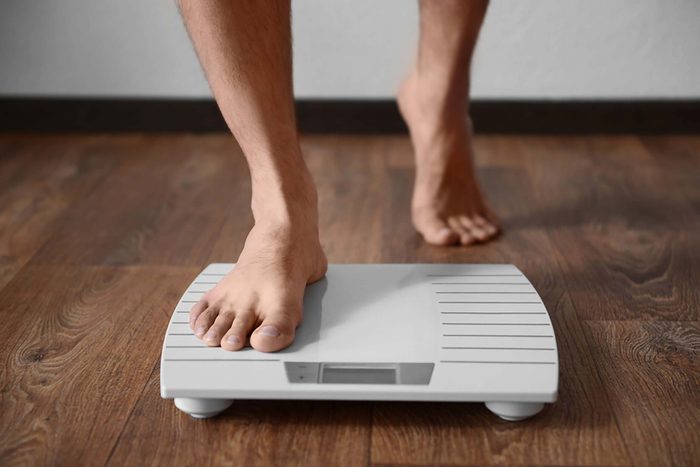What causes gout?
Gout is a common and potentially painful type of arthritis. You can experience gout symptoms if you have a buildup of uric acid in your blood. Uric acid is a waste product that results from normal body processes and usually passes through the kidneys and out of the body in urine, according to the National Institute of Arthritis and Musculoskeletal and Skin Diseases. But when the body produces too much uric acid, or the kidneys cannot get rid of it fast enough, the excess acid might form crystals in your joints. This can cause the pain, inflammation, and swelling that characterizes gout. If you are taking a medication that increases the level of uric acid in your bloodstream or have a family history of high levels of uric acid, you are more likely to get gout, says Eric Ruderman, MD, a professor at Northwestern University Feinberg School of Medicine. (Check out these 13 natural gout treatments for pain and swelling.)

Gout symptom: Swollen big toe
One of the first gout symptoms is usually a sudden episode of painful swelling due to the crystallization of uric acid, and this occurs most often in the joint of the big toe. Hyon Choi, MD, of Massachusetts General Hospital, says the pain can be so severe it feels like a bone has been broken. “It often happens abruptly in the middle of the night and is so intense you can’t put a bed sheet on top of it,” he says. “Even the lightest touches create a huge pain.” Dr. Choi says the swelling occurs in the big toe, which becomes warm, red, and swollen, because it’s the furthest joint from the heart, where the body temperature is the lowest and crystals are more likely to deposit. The gout attacks can last a few days or even a few weeks before the pain goes away, and another episode might not occur for months or years.

Gout symptom: Other swollen joints
Swollen joints are other common gout symptoms. Any joint can be affected with gout depending on where the crystals deposit, says Puja Khanna, MD, director of the gout clinic at the University of Michigan. In men, joints in the feet, ankles, and elbows are more frequently affected, Dr. Khanna says, while in women, inflamed joints in the hands and knees are more predominantly affected. (These are the common signs you might have gout in your ankle.)
Gout risk factor: Taking a diuretic medication
Diuretic medications taken to help lower high blood pressure can raise uric acid levels. Patients with rheumatoid arthritis or psoriasis who take drugs that suppress the immune system also have an increased risk of getting gout, according to the Arthritis Foundation. If a patient is diagnosed with gout, a doctor might change their medications to ensure lower levels of uric acid, Dr. Choi says. You can try these essential oils for gout relief too.

Gout risk factor: Eating a “king’s diet”
Although gout symptoms can affect anyone, consuming a diet high in purines, a compound found in certain foods and drinks, can increase the risk of gout, according to the Arthritis Foundation. Red meat, shellfish, sugary soda, and alcohol—especially beer—are high in purines. What’s so bad about eating too much of the “king’s diet”? When purines are broken down, uric acid forms. By eating more purines, you increase the level of uric acid in your body. If your body struggles to eliminate uric acid through natural processes, such as urination, gout can occur. “With all these fast food chains coming in and fatty meals available, all these folks who didn’t have gout in the past are now getting it,” Dr. Choi says. “It used to be called the disease of kings, but now everyone can afford the king’s meal.”
Gout risk factor: Being overweight
People who are overweight produce more uric acid, and their kidneys have a harder time eliminating it, making these patients more at risk of gout, according to the the Arthritis Foundation. If a physician does diagnose a patient with gout, he or she might recommend lifestyle changes to help the patient lower their weight, Dr. Choi says. Here are the other things pain doctors do to never get arthritis.

Gout risk factor: Recent hospital stay
Recent surgery or trauma has been associated with an increased risk of gout. Dr. Ruderman says this is because fluid levels often fluctuate during hospital stays, and patients might also be put on diuretics depending on the nature of their illnesses.

Gout risk factor: Having gone through menopause
Gout is more common in men, with an average of six million American men experiencing gout each year, compared with two million women, according to the Arthritis Foundation. Women have lower levels of uric acid until they go through menopause, when their levels approach those of men. Having gone through menopause means that women are much more likely to get gout. (Next, check out these 12 simple habits that lower your risk of arthritis symptoms.)


